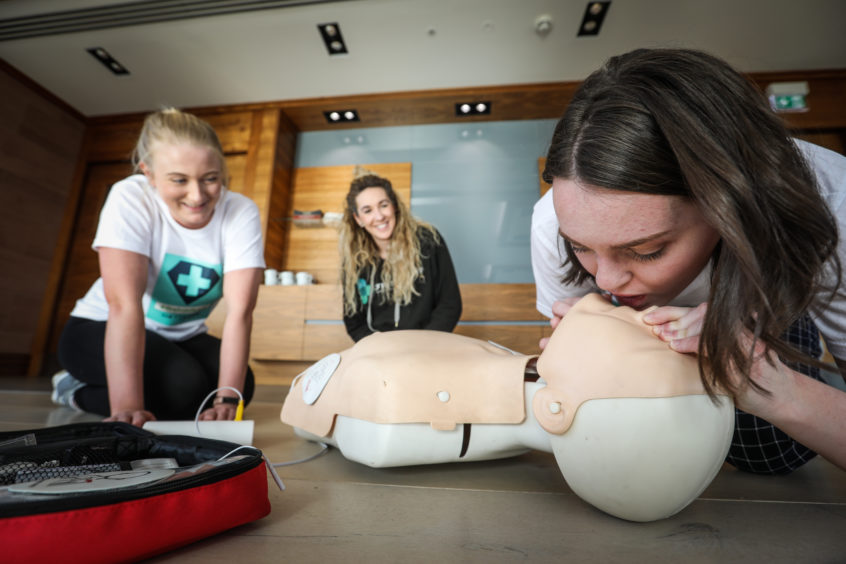More Scots are now surviving a cardiac arrest, thanks to bystanders performing lifesaving PCR.
Cardiopulmonary resuscitation was performed on 64% of people who suffered cardiac arrest outside of hospital or before paramedics arrived last year, according to the Scottish Government’s Out-of-Hospital Cardiac Arrest (OHCA) report.
The latest figure, released in January is the highest percentage on record for the country. The figures from 2018-19 have risen from 41% in 2015.
The figures show how first aid training can make a difference as survival rates has increased with one in 10 people surviving compared to one in 20 in 2015.
In the absence of CPR, survival rates are significantly lower, with the chances of survival rapidly reducing for every minute without bystander intervention.
But despite the positive increase in bystander CPR, a worrying investigation by the Resuscitation Council found that less than half of bystanders in the UK would intervene when someone collapsed due to their lack of first aid knowledge.
Countries like Norway and Denmark have taken drastic action towards first aid, ensuring that all children learn the lifesaving skills.
The success of these schemes is reflected in the countries survival rates.
Scotland is still lagging behind when compared with Europe, as Norway’s bystander CPR rate is 73% with a 25% survival rate.
In Denmark, 22% of people who suffer a cardiac arrest will survive, while in North Holland the figure is 21%
First aid is taken seriously in Danish schools, as 11-year-old began mandatory CPR training in schools in 2005 and by 2011 bystander CPR had doubled and out-of-hospital cardiac arrest survival had tripled.
More than six million people die each year worldwide following Sudden Cardiac Arrest, making the condition the world’s biggest killer.
In Scotland, an average of 3,200 people experienced a cardiac arrest where their heart stops pumping blood and they stop breathing.
Public Health Minister Joe Fitzpatrick has welcomed the improvement in Scottish figures and has praised initiative which provide training in the lifesaving technique.






